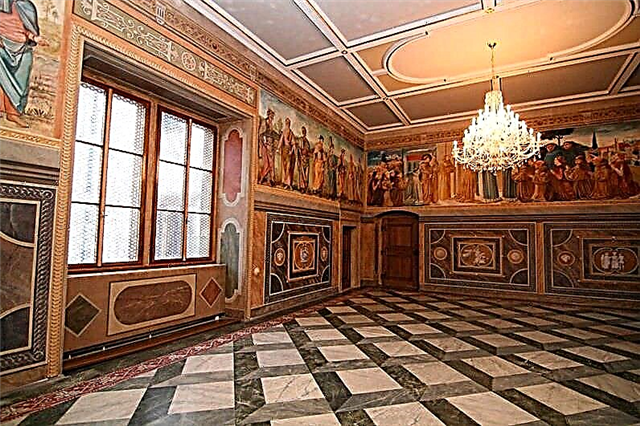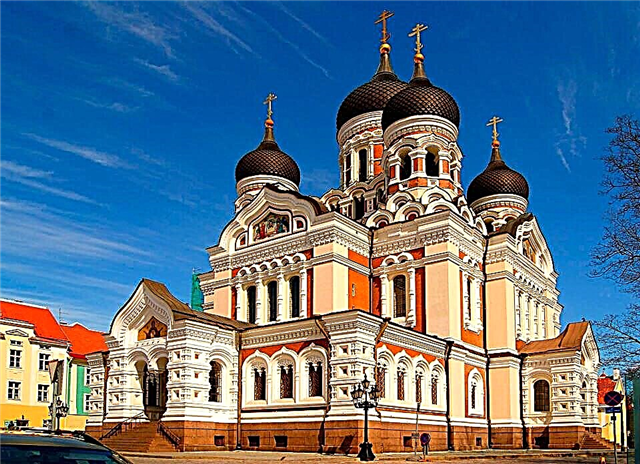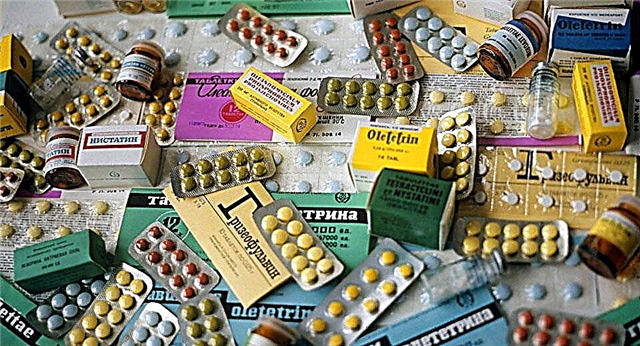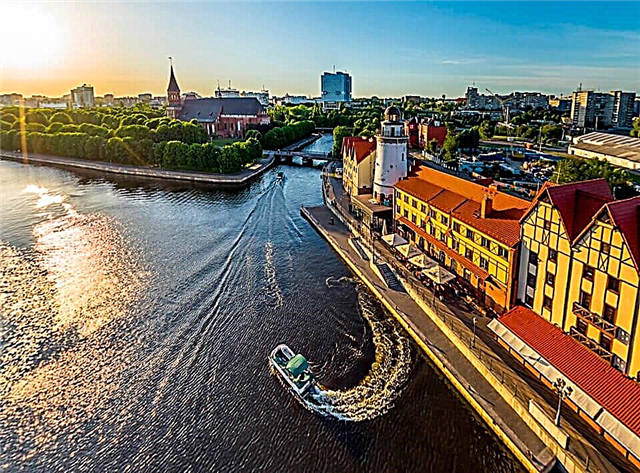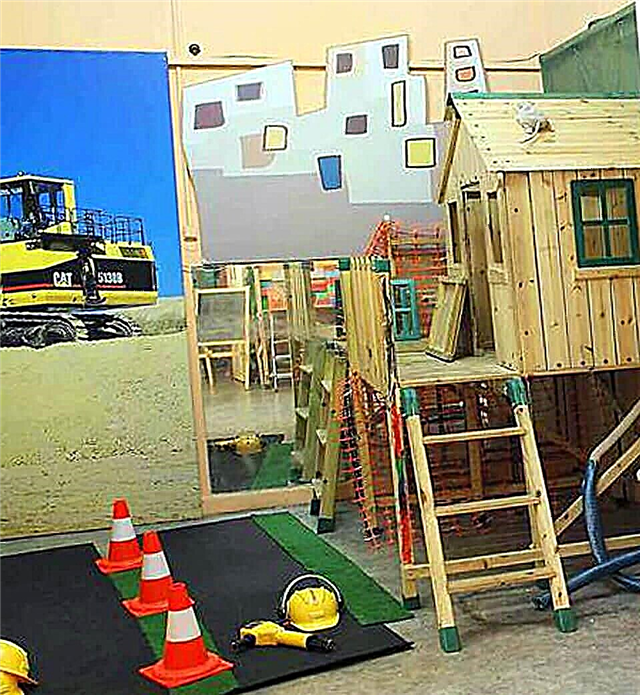The museums of Athens are must-see places for tourists tired of passive beach holidays. The oldest city has not only state but also private exhibitions. And the topics are very diverse, not repeating each other. Inspection of some takes from 1 hour to 3, for exploring others, even a whole day will not be enough. And the impressions received will last until the next vacation.
New Acropolis Museum

The complex received its first visitors in 2009, and since then has been included in the list of the 25 best museums in the world. He offers to see the most interesting exhibitions, but he himself has a difficult history. The Greek authorities built the first complex in the 19th century. The basis of the collection was made up of artifacts found on the Acropolis Hill and in its vicinity. But the work continued, the collection grew. Many items ended up in storerooms.
But the government decided to give guests the opportunity to get acquainted with all the artifacts, so it was decided to build a new complex. A competition was announced, but, summing up the results, the winner was not revealed. The same thing happened during the 2nd competition. For the third time, the Greek government allowed foreign projects to participate. And the tender was won by architects from Italy.
Construction began. But during the work on the Acropolis Hill, it turned out that at the site of the new building there are the remains of an ancient settlement. And the work was stopped again. This time, the authorities set a specific condition: the structure should not hide the found buildings, on the contrary, they should be included in the building. And the new winners of the next competition succeeded.
The complex consists of several parts:
- The 1st floor has a transparent floor. Through it one can see the foundations of houses, ancient utensils. A unique hall is also located here. Its floor is inclined at an angle to the hill and is made of transparent high-strength glass. It seems to tourists that they are climbing the Acropolis.
- The 2nd floor invites you to examine the finds corresponding to the archaic period. The halls have huge windows that let in enough light to view the exhibition.
- The 3rd floor will delight you with the finds found in the Parthenon. The entire room is oriented so that it completely repeats the location of the temple.
On the second floor, tired tourists can relax in a cozy restaurant and taste national cuisine. You can visit the complex from 8 am to 8 pm on all days except Monday and Friday. On Monday it is open from 8 am to 4 pm and on Friday from 8 am to 10 pm.
National Archaeological Museum

This exhibition complex was founded at the end of the 19th century. The land for it was donated by the patron Eleni Tositsa. But it was built with funds allocated from the country's budget. It is noteworthy that the first excursionists visited the exhibition in the still unfinished museum. During World War II, the management took steps to preserve the collection. The exhibits were moved to bank vaults, taken out and hidden in caves. The artifacts were saved from death. In 1964, after a large-scale reconstruction of the building, visitors were presented with an updated exposition.
1983 brought changes to the life of the complex. From now on, the purpose of the work was not only the collection, storage and provision of artifacts for inspection, but also teaching archeology to citizens, familiarizing with the ancient art.
Today tourists can see the most valuable collections:
- sculptural
- vases and household items
- bronze
- Middle Eastern and Egyptian antiquities
- objects of the Cycladic, Neolithic, Minoan and Mycenaean civilizations
The complex has its own laboratory and restoration workshops. They are constantly working on the preservation of artifacts. Tourists can visit the exhibition from 8 am to 8 pm on all days except Monday. On Monday, the complex starts working at one o'clock in the afternoon.
Benaki Museum

The exposition is located in a house built by the businessman Emmanuel Benakis in the 19th century. His son was fond of collecting antiques, but had no particular preferences. A few years later, Antonis Benakis became the owner of a large number of artifacts belonging not only to different eras, but also to different cultures. After the death of Emmanuel, Antonis opened the country's first private museum in the house.
Antonis was in charge of the complex until his death, that is, until 1959. And then the family collecting was continued by his heirs. Until 2000, the entire exposition was located in the Benaki house, but after the completion of the reconstruction, the house displays only exhibits dedicated to Greek culture. The rest of the collection is housed in specially rebuilt buildings.
Benaki is the most visited complex. Priceless artifacts can be seen here. The exhibition is open to visitors on Wednesday and Friday from 9 am to 5 pm, on Saturday from 9 am to midnight, on Sunday from 9 am to 3 pm. On Thursday, admission is free. The same goes for International Museum Day (18 May).
Byzantine Museum

Finds collected by enthusiasts in 1914 became the basis for this exhibition. And the Christian Archaeological Commission helped to open the complex. The director, Adamandio Adamandiou, recruited Greek patrons who donated money to purchase the building. First, the finds were exhibited at the Academy of Athens on the 1st floor. But the archaeological society and enthusiasts continued to add to the collection, and soon a new building was needed. In 1930, the collection took over the Ilisia estate. Duchess Sophia Lebrun once lived here.
In order to accommodate all the artifacts, a large-scale reconstruction of the building was required. The whole difficulty was that the changes should not be visible from the outside. Therefore, the restructuring affected only the interior. The courtyard of the villa is very interestingly decorated. There is a fountain and Byzantine mosaics. The entire courtyard is surrounded by green orange trees. Flower beds are broken. After viewing the exposition, it is pleasant to relax here.
Today the presented exposition is divided into 2 sectors:
- antiquity (Byzantium)
- world of Byzantium
The most valuable exhibits are: the icon of Catherine of Alexandria, the icon of Our Lady of Prolontis, the icon of St. George, made half of gold, half of silver. The complex awaits tourists all days from 8 am to 8 pm. On Good Friday, the exhibition runs from 12 noon to 5 pm. Days off: January 1, December 25 and 26, Easter.
Museum of Cycladic Art

The exposition is based on the Greek collector Nicholas Goulandris. He received permission from the authorities to collect artifacts in the Cyclades archipelago. The first items were collected there in 1960. Goulandris provided exhibits for the exhibition at the Benaki Museum. It took place in 1978. Basically, these were marble figurines and various vessels found by Goulandris. Subsequently, the collection of Cycladic art was exhibited all over the world: in Madrid, Washington, Great Britain, Tokyo, Brussels.
After the death of Nicholas, his widow donated a collection of artifacts from Greece. And since 1986 the exhibition has been located in the Goulandris house. But even after the death of the collector, the collection continues to grow, so in 1990 the authorities expanded the premises by adding a new wing.
The exposition is divided into 3 periods:
- 3200-2000 BC (Cycladic culture)
- 2000-4000 years (ancient Greek culture)
- 4000 BC to 6000 year (culture of Cyprus)
The exposition is closed to visitors on Tuesday. On Monday, Wednesday, Friday and Saturday the complex is open from 10 am to 5 pm. Thursday - from 10 am to 8 pm, Sunday - from 11 am to 5 pm.
Museum of the City of Athens

The complex was founded in 1980. The exposition tells about the history of Greece, from the Frankish rule to the 19th century.Mostly, the personal belongings of the royal family and aristocrats of those periods are presented. The center consists of two separate buildings connected by a covered walkway. In the first, Paparrigopoulou 7, tourists will see the apartments of the ruling couple: King Otto and Queen Amalia. A very romantic atmosphere has been created here. The second, Paparrigopoulou 5, houses an excellent art gallery and reconstructed rooms of the 19th century nobility.
The center awaits visitors: on Saturday and Sunday from 10 am to 3 pm, on Monday, Wednesday, Thursday and Friday - 10 am to 4 pm. The center is closed at Christmas, New Years and Easter.
Numismatic Museum

The exposition has existed since 1834. Over the long period of its existence, the exhibition has a huge number of unique storage units. But it did not have its own permanent premises, artifacts were shown only in rare periods in rented areas. But enthusiasts were able to change the situation: as a result of the work carried out, the collection was finally housed in the former mansion of Heinrich Schliemann. It happened in 1999. But the building was abandoned for a long time, so some reconstruction was required.
Visitors begin their tour of the exposition from the hall, which is dedicated to Heinrich Schliemann and his family. Here are the personal belongings of the archaeologist and his family. This is how the organizers honor the scientist's merits. The following rooms introduce tourists to coins of different times, the exposition teaches how to distinguish counterfeit money from real money, as did the inhabitants of ancient Greece and later times. But that's not all. The center has a lecture hall and a small mint. Tourists will listen to a short lecture on the history of money; those who wish can try to mint their own money.
The complex accepts guests from 9 am to 5 pm. The exposition is closed on Christmas, New Year and Easter.
War museum

In 1964, the Greek government decided to create a War Museum. The exposition should reflect the struggle of the people for a free country. But the project was implemented only in 1975. The place for the organization of the complex was chosen as a landmark. A military camp was located at the intersection of Risari Street and Reina Sofia Avenue in the period between World Wars 1 and 2. After the victory of the countries of the anti-Hitler coalition, the need for it disappeared, the place turned into a wasteland.
Construction of the building began in the 70s. It was located well: practically in the very center. And in 1975 the first visitors examined the exposition. Today, tourists are offered an exhibition consisting of an internal and an external part. Inside the building are located:
- 11 halls, in which, in chronological order, the wars waged by freedom-loving Greece are reflected.
- A collection of weapons donated to the complex by Petr Saroglu. It consists of artifacts brought from all over the world.
- Temporary and thematic exhibitions.
Outside, in an open area, there is a museum of military equipment. Here you can see heavy military equipment from different times. The exposition is open from Tuesday to Saturday from 9 am to 5 pm, on Monday - from 11 am to 4 pm, on Sunday - from 9 am to 11 pm. On Good Friday, Christmas, January 1, Easter, the complex is closed.
History Museum of the University of Athens

This is one of the oldest buildings in Athens. It was built during the Ottoman Empire. In 1931, Cleantis and Schaubert bought it, they rebuilt the house and set up their own architectural office in it. Then, in 1837, the owners allowed the young University of Athens to settle in the building. In 1861, Cleatis sold the building. The Greek authorities recognized the building as an architectural monument, and in 1959 the university administration took measures to return the house to its subordination. In 1967, the application was granted.
In May 1987, the university celebrated its 150th anniversary. And the opening of our own museum was timed to coincide with this event. Visitors are invited to get acquainted with the history of the institution and its branches. All exhibitions are thematic. You can view the exposition from 9 am to 5 pm. The exhibition is closed on Christmas, New Years, Good Friday and Easter.
Ceramics

This is the oldest and largest cemetery discovered in Greece. It is noteworthy that the Dipylon and the Sacred gates are located here close to each other. On both sides of the wall that once connected them, noble Athenians were buried. The origin of the name is unclear. Traveler and explorer Pausanias believes that the area is named after the hero Keram. But there is an opinion that the necropolis got its name from the pottery settlement (Keramos), which was located on the banks of the Eridan River.
Examining the burial, it is worth paying attention to the monuments: steles, tombs and crypts. On the territory of the cemetery, there is the Keramik Museum, which displays objects that the Athenians donated to the dead. These are dishes, decorations, amphorae with wine and oil. Open to visitors from 8 am to 8 pm.
Frisiras Museum

This is a permanent exhibition. She has been working since 2000 and is located in a house specially equipped for her. The building that houses the exhibition was rebuilt in 1860. But before the collection of Vlassis Frissiras could be accommodated, a reconstruction was required. Frisiras has amassed an extensive collection of paintings and drawings by European artists in the 20th century.
The total number of storage units is more than 5 thousand. Tired sightseers can have a snack in the cafe located in the building with dishes of national and European cuisine. There is a souvenir shop. The complex is open from Wednesday to Friday from 10 am to 5 pm, Saturday and Sunday from 11 am to 5 pm.
Museum of Greek Folk Musical Instruments

The exposition is based on the collection of the researcher Fivos Anoianakis. He managed to accumulate the most interesting specimens of musical instruments from different times. In 1978 he donated the collection to the city. Today the exhibition numbers over 1200 items. Only half is available for inspection: it constitutes a permanent exhibition. The rest of the artifacts are the basis of thematic exhibitions. Some musical instruments are on display in other complexes.
The center has arranged the exhibits on 3 floors:
- On the 1st floor, visitors can view percussion instruments: drums, tambourines, tambourines. Winds are adjacent to them: pipes, bagpipes.
- On the 2nd floor there are plucked string instruments: guitars, lutes, cymbals.
- The 3rd floor is occupied by objects that create sound inside themselves. Here the imagination of the people fully manifested itself.
Some instruments are richly decorated with inlays of bone, precious metals and stones. The center is a real find for musicians and just music lovers. The complex is ready to receive visitors on all days of the week, except Monday, from 8 am to 3 pm.
Museum of the History of Greek Costume
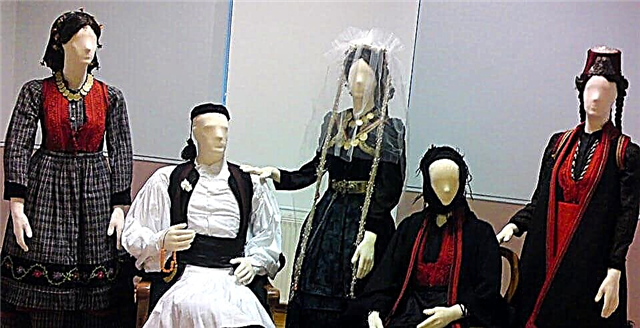
The center was organized at the initiative of the Athens Women's Lyceum Club in 1988. The club was especially supported by the Minister of Culture of Greece Melina Merkouri. The Lyceum club acquired its first exhibits back in the 1920s. These costumes, in addition to exhibitions, were used for their intended purpose: they were worn by participants in performances and concerts. Today the lyceum club owns over 250,000 storage units.
Some of the costumes can be seen in the permanent exhibition, while the rest, according to the established tradition, participate in performances and thematic exhibitions. The center awaits visitors from Monday to Friday from 10 am to 3 pm.
Archaeological Museum of Piraeus

This complex is for those who want to learn more about the history of Greece. The expositions tell about the formation and development of Athens, which was not only the center of trade in the ancient Eastern Mediterranean, but was the main shipbuilding center. The artifacts tell about the life of the city, from the Mycenaean period to the Roman rule. Most of the exhibits were found in the Piraeus region. Some were raised from the bottom of the sea. Basically, these are bronze and marble statues and bas-reliefs.
The complex has its own laboratory, where employees monitor the state of artifacts, and an extensive storage facility. The storage units located there participate in thematic exhibitions. There is a lecture hall in the center, where employees introduce visitors to the little-known pages of the history of Athens. Open to visitors from Tuesday to Sunday from 8 am to 3 pm. Good Friday - from 12 noon to 5 pm. The complex is closed on January 1, Christmas, Easter.
National art gallery

In 1878, the University of Athens handed over to the state the works of art contained in the repositories. Soon the Greek philanthropist Alexandros Sutsos presented the city with his own collection of paintings. This was the beginning of the gallery. For some time the gallery was located in the building of the University of Athens, and in 1900 it moved to its own building. At that time, the gallery fund was small: about 250 works of art. But caring citizens constantly donated valuable canvases. One of these donors was Evripides Kutlidis, who presented the gallery with a collection of paintings by artists of the 19th and 20th centuries.
Today tourists willingly visit the exhibition. Here you can see the most valuable paintings by El Greco, Durer, Giordano. In addition, thematic exhibitions are regularly organized. The center awaits visitors on all days except Tuesday, from 9 am to 4 pm.
Railway museum

The center was founded in 1979. On a small area, about 1200 square meters, a unique collection of everything that moves on rails is presented - trains and trams. Tourists can see:
- oldest train (built in 1884)
- Sultan Abdullah's personal carriage (there are places for smoking passengers)
- unique photos and maps
- vintage tram
- train and tram tickets
- railroad employee uniform
- trophies captured by the Greek army in the Balkan Wars
The center expects visitors on Tuesday, Thursday, Friday, Saturday, Sunday from 9 am to 1 pm, on Wednesday - 5 pm to 8 pm. It is noteworthy: it accepts tourists for free!
Hadrian's Library

The building was built during the time of Roman Greece by order of the Emperor Hadrian. Immediately after its creation, it performed several functions:
- The library itself with a reading room. The funds numbered over 16,000 units. The Emperor made sure that valuable manuscripts were available to visitors.
- Hall for debates and lectures.
- Premises where documents were translated from foreign languages.
- According to unconfirmed reports, the theater.
Tired visitors could relax in the courtyard near the fountain. The territory was decorated with statues of Emperor Hadrian. The library had a difficult fate. She worked for a hundred years, then she was plundered and destroyed by the Germanic tribes. In the following centuries, the building performed various functions until it was completely forgotten. After reconstruction, in 2004, the library is again ready to receive visitors, but this time as a museum. The center is open from 8 a.m. to half past seven in the summer, and in winter - from 8 a.m. to 3 p.m.
Theater Museum

Everyone knows that the theater originated in Greece. And it has been actively developing for many centuries. It presents an interesting exposition. Visitors can see:
- Scenery
- personal belongings of famous actors
- ancient masks
- theatrical costumes
- posters, programs, theater tickets
- photos
The center has a library and a music library, where scientific research is carried out. The complex is open from 9 am to 2:30 pm.
Tower of Winds

There is no exact data on the construction of the Tower of Winds. But we can say with confidence that this is the first monument to science. With its help, the ancient Greeks knew the time and determined the weather. And to make the forecast as accurate as possible, the gods were called:
- all winds: Evrus, Boreas, Apeliot, Kekia, Sktron, Lips, Zephyr, Not, which showed the direction
- Triton, in the form of which a weather vane was made
The tower was used for weather forecasts, then it was used as a Christian church. After a while, she was captured by the dervishes. They decided that there was no better hostel. Then the building was simply abandoned. The building began to be reconstructed at the beginning of the twentieth century, parts of the stucco molding were restored in the 70s of the twentieth century, but the end of the work is still far away. However, the tower can be visited from 8 am to 6 pm in summer, from 8 am to 2 pm in winter.
Children's Museum

Here it is proposed to develop the child's abilities in the form of a game. The study of the surrounding world also happens:
- Little visitors make physical experiences in the Bubbles Room.
- And in the Pythagoras Room, kids study geometry.
- You can play with your parents in the Family Room.
- Children study chemical processes in the Kitchen, where they prepare simple meals under the supervision of an instructor.
There is also a small shop where visitors can buy educational and interactive toys. It is important to remember that all classes are conducted exclusively in Greek. Foreign guests participate in master classes without an interpreter! The center receives visitors from Tuesday to Friday from 10 am to 2 pm. Saturday and Sunday - from 10 am to 3 pm. The complex is closed in July and August.


